-
Hello!
Either you have not registered on this site yet, or you are registered but have not logged in. In either case, you will not be able to use the full functionality of this site until you have registered, and then logged in after your registration has been approved.
Registration is FREE, so please register so you can participate instead of remaining a lurker....
Please be certain that the location field is correctly filled out when you register. All registrations that appear to be bogus will be rejected. Which means that if your location field does NOT match the actual location of your registration IP address, then your registration will be rejected.
Sorry about the strictness of this requirement, but it is necessary to block spammers and scammers at the door as much as possible.
You are using an out of date browser. It may not display this or other websites correctly.
You should upgrade or use an alternative browser.
You should upgrade or use an alternative browser.
Back after a few years...
- Thread starter ratsnakehaven
- Start date
ratsnakehaven
I like functionality.. :)
Thanks, Nanci.
I think I'll tackle my Slowinski corns for my next post. I don't have many pics of these guys, but a few.
This first one is the female I bought from a guy in TX. She was a baby in 2006...
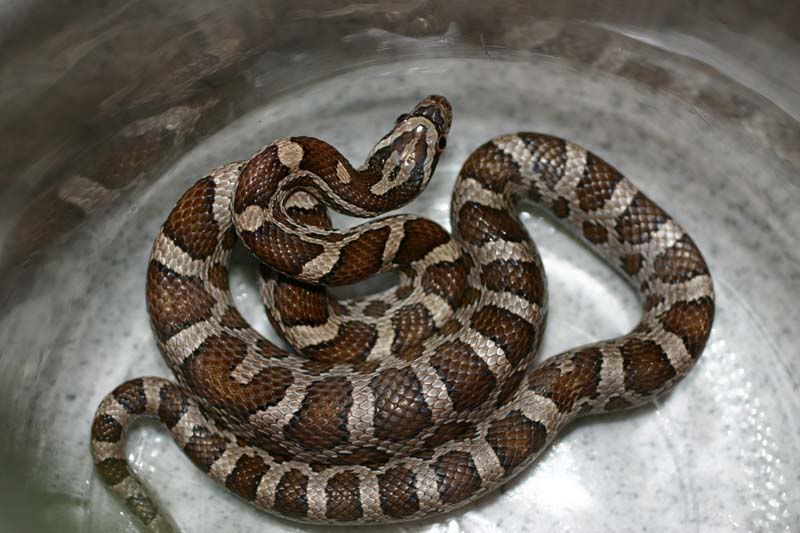
I also have a male from the same guy. The other slowinskii I have is also a male, which I caught as a baby in s.e. OK. All these snakes are from the Ouachita Mountains.
Here's a pic of one of the males....
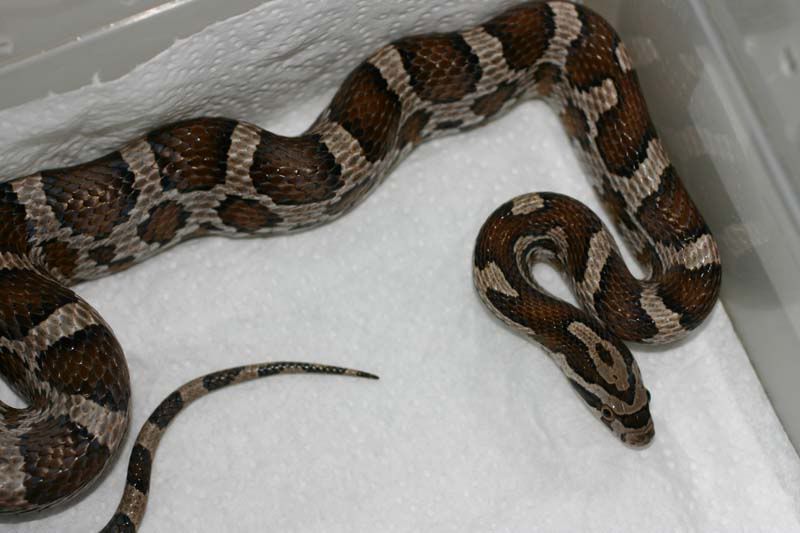
I consider this form to be a type of corn snake. These snakes seem much more like corns to me than Emory's rats. Some folks, however, think they are Great Plains ratsnakes.
Are Slowinski's corns considered corn snakes by members of this site? Do members ever start threads about Slowinski's corns?
Thanks for any comments... :toiletgra
I think I'll tackle my Slowinski corns for my next post. I don't have many pics of these guys, but a few.
This first one is the female I bought from a guy in TX. She was a baby in 2006...

I also have a male from the same guy. The other slowinskii I have is also a male, which I caught as a baby in s.e. OK. All these snakes are from the Ouachita Mountains.
Here's a pic of one of the males....

I consider this form to be a type of corn snake. These snakes seem much more like corns to me than Emory's rats. Some folks, however, think they are Great Plains ratsnakes.
Are Slowinski's corns considered corn snakes by members of this site? Do members ever start threads about Slowinski's corns?
Thanks for any comments... :toiletgra
ratsnakehaven
I like functionality.. :)
Ok, time to post something other than a corn snake. I'm going to tackle my Asian ratsnakes now. I'm only working with two species at the moment, but have worked with most of them over time.
Here's a pic of one of my South Korean Dione's ratsnakes, Elaphe dione, eating a quail's egg....
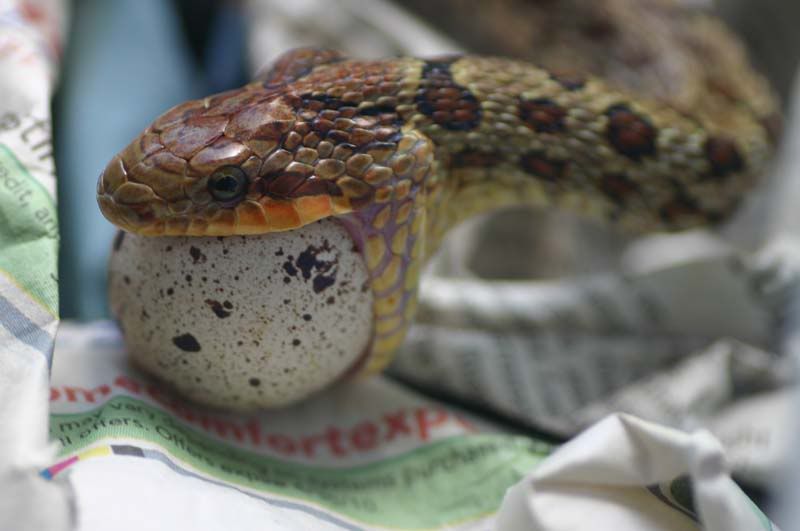
Dione's ratsnakes are pretty cold hardy, but are very easy to maintain, don't get very big, and are easy to reproduce.
My other Asian and one of my all time favorites is the Chinese twin-spotted ratsnake, Elaphe bimaculata. They are supposedly a subtropical snake and one of the smallest of all the ratsnakes.
Here's a baby I produced a few years ago....
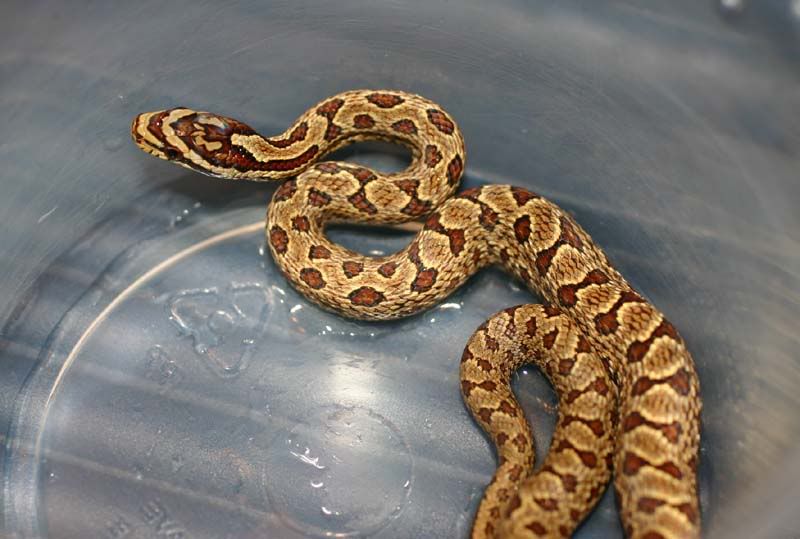
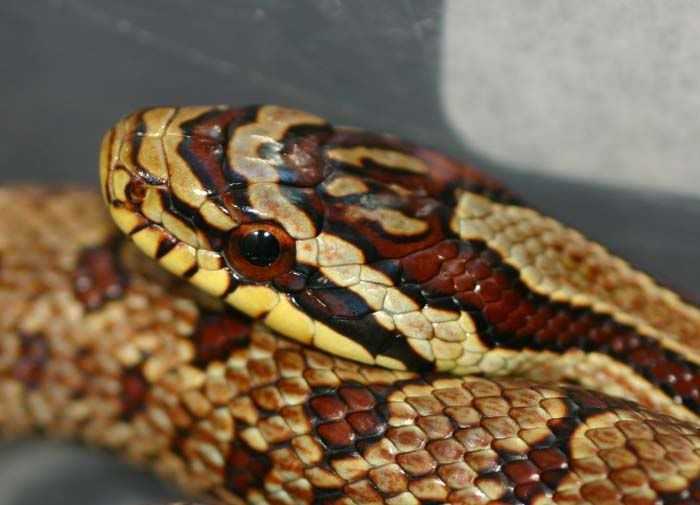
Bimacs are pretty hardy and I usually brumate them for about three months, even though they can go w/o brumation. They are easily kept in smallish tanks.
Here's one of my original bimacs from the 90's. We called her the "blonde" phase bimac, and her name was Blondie...
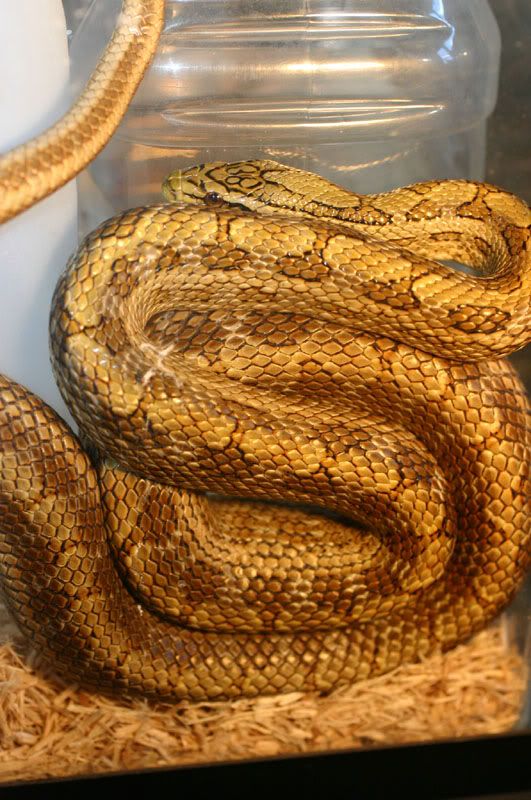
My current oldest male is one of her prodigy.
Here's a pic of one of my South Korean Dione's ratsnakes, Elaphe dione, eating a quail's egg....

Dione's ratsnakes are pretty cold hardy, but are very easy to maintain, don't get very big, and are easy to reproduce.
My other Asian and one of my all time favorites is the Chinese twin-spotted ratsnake, Elaphe bimaculata. They are supposedly a subtropical snake and one of the smallest of all the ratsnakes.
Here's a baby I produced a few years ago....


Bimacs are pretty hardy and I usually brumate them for about three months, even though they can go w/o brumation. They are easily kept in smallish tanks.
Here's one of my original bimacs from the 90's. We called her the "blonde" phase bimac, and her name was Blondie...

My current oldest male is one of her prodigy.
ratsnakehaven
I like functionality.. :)
Here's a couple other Asian species that I've kept.
One is the Chinese red-headed ratsnake, Orthriophis moellendorffi, or Moellendorff's ratsnake...

These snakes are the most like corn snakes of any of the Asians in some ways, but way different in other ways. Look at the color/pattern. They spend most of their time underground and are crepuscular. They brumate for about four months usually. One big drawback is that they get huge.
The second is the Mandarin ratsnake, Euprepiophis mandarinus...
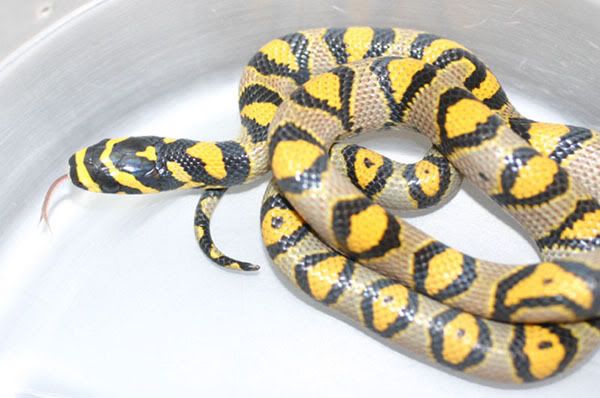
This particular snake is from Sichuan Province stock. These guys don't get too big and are quite hardy. They have great color/pattern combinations. A very interesting snake and not too hard to care for. One drawback is that they are mostly nocturnal. They are also very expensive. I may get back into this species in the future.
I've greatly reduced my collection since moving to AZ in order to make room for more N. A. species and to start my collection in the direction of working with the best "pet" snakes...
:licklips:
One is the Chinese red-headed ratsnake, Orthriophis moellendorffi, or Moellendorff's ratsnake...

These snakes are the most like corn snakes of any of the Asians in some ways, but way different in other ways. Look at the color/pattern. They spend most of their time underground and are crepuscular. They brumate for about four months usually. One big drawback is that they get huge.
The second is the Mandarin ratsnake, Euprepiophis mandarinus...

This particular snake is from Sichuan Province stock. These guys don't get too big and are quite hardy. They have great color/pattern combinations. A very interesting snake and not too hard to care for. One drawback is that they are mostly nocturnal. They are also very expensive. I may get back into this species in the future.
I've greatly reduced my collection since moving to AZ in order to make room for more N. A. species and to start my collection in the direction of working with the best "pet" snakes...
:licklips:
ratsnakehaven
I like functionality.. :)
Wow, really cool!! I love the C Red-headed!!
Thanks, Nanci. Here's a yearling of that species...

I loved working with this species, but they just got too darn big...ughhh!
I also worked with beauty snakes for quite awhile. Here's a Chinese beauty snake, calico morph...

This is another large species from southern China. The normal form is greenish. They got too big also and I just didn't have room for the large terrariums they needed. But a good friend of mine is continuing the line.
:eatsmiley
ratsnakehaven
I like functionality.. :)
Hello, nice to meet you. I am new here.
Beautiful snakes you have. They look very healthy and content.
Thank you!
One of the things I pride myself on is being able to create the right conditions for a species to be able to thrive in a captive environment. I love learning about new species and their natural history; but that's another story...
:cheers:
ratsnakehaven
I like functionality.. :)
Welcome back TC :*)...Great photo's bud, and I love those Boot Key corns. Hope you keep us updated next year with lots of pics :cheers:
Thanks, dude!
I plan to work closely with the Boot Key corns. I should have lots of pics next season, as they progress from being hotties to being chunkies to clutches, incubation, babies, etc. It should be fun.
PS: My back porch herp room starts to warm up in March. By April we're getting nice daytime temps in the 80's. I'm sure they'll be ready to leave the confines of my inhouse Herp Room sometime in March.
:santa: (aka: Terry)
